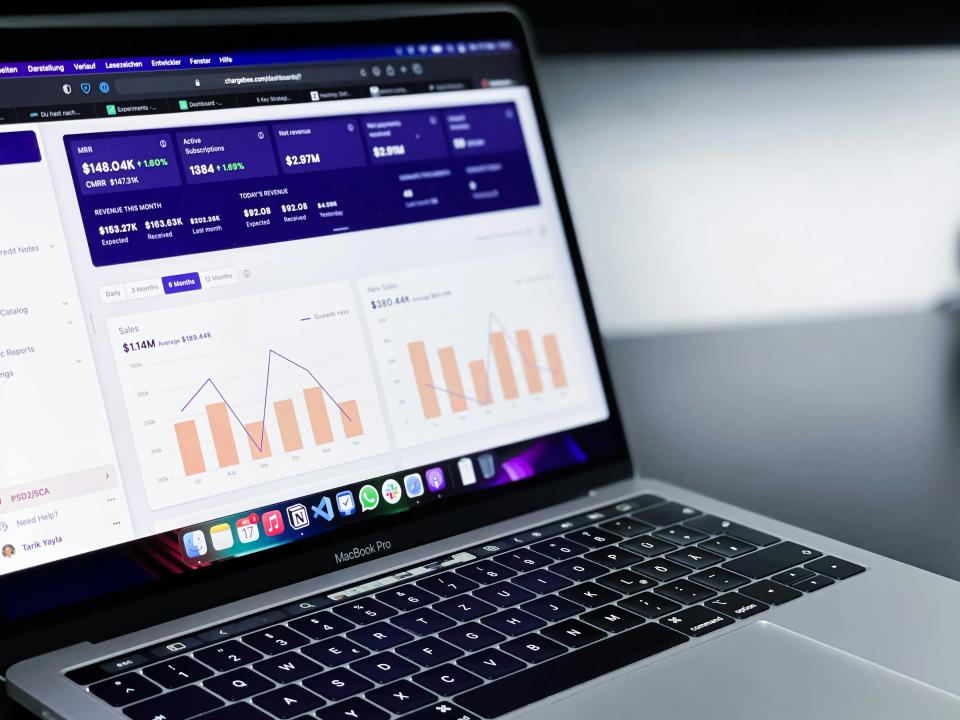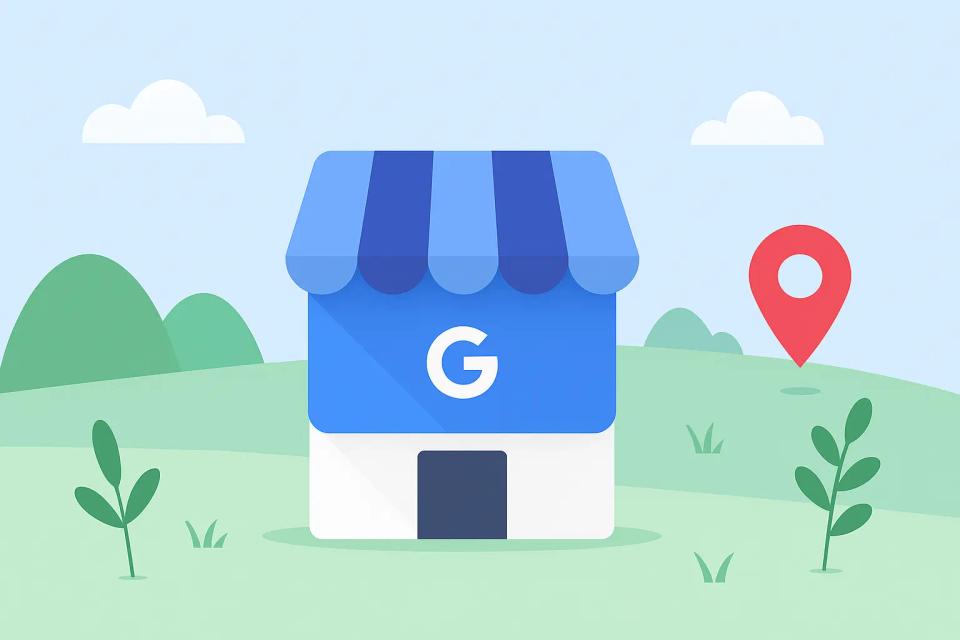Managing local SEO for one storefront is a full-time job. But what happens when you have 10, 50, or 500? The complexity doesn't just add up; it multiplies.
Your standard tactics break down under the weight. The strategies that worked for a single shop become a logistical nightmare, and your brand consistency is put to the ultimate test. You feel the pressure, the frustration of trying to be everywhere at once, only to feel like you're making an impact nowhere.
This guide moves beyond the basics. We're pulling back the curtain on the advanced framework we use at CaptivateClick for optimizing local SEO for multi-location businesses. It's time to turn that overwhelming challenge into your most significant competitive advantage.
The Foundation: A Scalable Google Business Profile (GBP) Architecture
Forget everything you think you know about a simple business listing. For a multi-location brand, your Google Business Profile architecture is the very cornerstone of local dominance. It must be built for scale, precision, and absolute control.
Structure for Success with Location Groups
Are you still managing each location one by one? That’s a recipe for burnout and costly mistakes. The first step to sanity and scale is using GBP Location Groups.
This simple organizational tool allows you to bundle listings by region, brand, or any other category that makes sense for your empire. The benefit isn't just tidiness; it's about streamlined management, simplified user permissions, and the power to push out bulk updates in minutes, not days. This is how you begin to build a system, not just a series of individual tasks.
Mastering NAP-W Consistency at Scale
You already know NAP: Name, Address, Phone Number. But for multi-location mastery, the "W" for Website is where amateurs fail. Pointing every location to your generic homepage is a critical error that dilutes your local authority.
The advanced practice is to ensure every single GBP listing points to a unique, location-specific landing page. This isn't just a suggestion; it's a requirement for telling Google that each storefront is a distinct, relevant entity in its community. According to BrightLocal, a staggering 86% of consumers are less likely to use a business if they find incorrect or inconsistent contact information online, and that includes the website link.
Automating with the GBP API & Third-Party Tools
Do you really want your marketing managers spending their days manually updating holiday hours for 100 different locations? The answer is no. True scale comes from leveraging technology to do the heavy lifting.
This is where the power of the GBP API and third-party tools like Yext or BrightLocal comes into play. These platforms allow you to automate critical tasks like updating hours, posting location-specific offers, and managing photos across all your profiles from a single dashboard. This isn't just about saving time; it's about ensuring accuracy and agility, positioning your brand as a sophisticated, tech-forward leader.
Customizing with Location-Specific Attributes & Services
Your primary business category is just the beginning. The real magic happens in the details. You must go deeper, customizing each GBP listing with unique attributes and services that reflect what that specific location truly offers.
Does your Austin cafe have "Outdoor seating"? Add it. Does your Chicago retail store offer "Curbside pickup"? Add it. By detailing the specific services and products available at each address, you dramatically enhance local relevance and give searchers the exact information they crave, making their choice to visit you an easy one.
Building Your Digital Storefronts: Hyper-Localized Landing Pages
Think of your website as your digital headquarters. But each of your physical locations deserves its own digital home base, its own unique storefront on your domain. This is a non-negotiable pillar of any serious multi-location local SEO strategy.
The Anatomy of a High-Converting Local Page
A generic "locations" page with a list of addresses is not enough. Each store needs its own dedicated landing page, meticulously optimized to convert local searchers into paying customers. This is your chance to prove you're part of their neighborhood, not just another faceless corporation.
These pages must be built with a clear, logical URL structure, like yourbrand.com/locations/city-state. They need unique title tags, meta descriptions, and H1s that scream the location's name, like "Your Brand in Downtown Denver." This is the foundational on-page SEO that gets you in the game.
But the real power comes from the content. Ditch the corporate jargon and write location-specific copy that mentions local landmarks, neighborhoods, or a heartfelt message like, "Proudly serving the Miami community since 2015." Add photos of the local team and the actual storefront, not stock images. And most importantly, feature glowing testimonials from local customers to build instant trust and social proof. For a deeper dive, explore our guide on creating locally relevant content that ranks.
Finally, the technical elements must be flawless. Each page needs an embedded Google Map of the specific location, a click-to-call phone number, and clear NAP-W information that matches its corresponding GBP listing exactly. According to Google, 46% of all searches are for local information; these pages are your answer to that massive demand.
Advanced Technical SEO: Speaking Google's Local Language with Schema
If you want to dominate local search, you need to do more than just hope Google understands your website. You need to speak its language directly. Structured data, or Schema markup, is how you explicitly tell search engines what your content is about, removing all ambiguity and unlocking powerful rich results.
Implementing LocalBusiness Schema
The foundational code for any local enterprise is the LocalBusiness schema. This markup clearly identifies your page as being about a physical place of business, providing search engines with critical information like your address, phone number, and hours of operation in a machine-readable format.
Implementing it is easier than you think. Here is a simple JSON-LD code snippet that can be adapted for each of your locations and placed in the <head> section of your local landing page:
<script type="application/ld+json">
{
"@context": "https://schema.org",
"@type": "LocalBusiness",
"name": "Your Brand - City Name",
"image": "https://yourbrand.com/images/location-photo",
"@id": "",
"url": "https://yourbrand.com/locations/city-state",
"telephone": "555-555-5555",
"address": {
"@type": "PostalAddress",
"streetAddress": "123 Main Street",
"addressLocality": "City",
"addressRegion": "ST",
"postalCode": "12345",
"addressCountry": "US"
},
"geo": {
"@type": "GeoCoordinates",
"latitude": 40.761293,
"longitude": -73.982294
},
"openingHoursSpecification": {
"@type": "OpeningHoursSpecification",
"dayOfWeek": [
"Monday",
"Tuesday",
"Wednesday",
"Thursday",
"Friday"
],
"opens": "09:00",
"closes": "17:00"
}
}
</script>
Using department or subOrganization Schema
Here's where we move from proficient to expert. What if your locations are more complex, like a car dealership with distinct "Sales" and "Service" departments, each with its own hours and phone number? This is where you use department or subOrganization schema.
This advanced tactic allows you to nest these distinct entities under the main parent location within your code. As Moz points out in their expert advice on local SEO challenges, this helps search engines understand your complex business structure, preventing confusion and ensuring the right information is shown to the right user. This level of detail is what separates the leaders from the followers.
Leveraging FAQ & Review Schema on Local Pages
Want to claim more prime real estate on the search results page? Use FAQ and Review schema on your local landing pages. By marking up your location-specific frequently asked questions, you can have them appear directly in the search results as a rich snippet, answering user questions before they even click.
Similarly, embedding local reviews and marking them up with Review schema can display those coveted star ratings right under your URL. This builds immense trust and can significantly boost your click-through rate. It’s a visual, trust-building signal that your competitors are likely ignoring.
Scaling Authority: Citation & Link Building for Every Location
Authority isn't built from a corporate headquarters; it's earned on the ground, in every single community you serve. A blanket, one-size-fits-all approach to link building and citations will fail. You need a hyper-local strategy that builds relevance for each and every storefront.
A Tiered Approach to Citation Management
Citations—mentions of your business's NAP information across the web—are a foundational local ranking factor. But not all citations are created equal. A tiered approach is essential for efficiency and impact.
Tier 1 is about consistency with the major data aggregators like Data Axle and Neustar. These services feed data to hundreds of other online directories, so getting it right here is paramount. According to a survey cited by DoCommunication, ensuring citation consistency is critical, as 73% of consumers lose trust in brands due to inaccurate listings.
Tier 2 is where the real competitive advantage lies. This is about pursuing listings in directories that are hyper-local and niche-specific for each location. Think local Chambers of Commerce, industry-specific portals, community blogs, and neighborhood business associations. This is the granular work that proves your local commitment to Google.
Acquiring Hyper-Local Backlinks
A link from the local newspaper is often more valuable for local SEO than a link from a national publication. Your goal is to acquire backlinks that scream local relevance. This requires creativity and genuine community engagement.
Sponsor a local youth sports team or a charity 5K and get a link from their website. Partner with a nearby, non-competing business—like a coffee shop next to your boutique—for a joint promotion and cross-link from each other's sites. Create a "Best of [City]" resource guide on your local landing page that links out to other local attractions, making your page a valuable hub for the community. These are the effective local SEO strategies that build an unshakeable local presence.
Managing Your Reputation Across the Map
What are people saying about your brand in Dallas? In Seattle? In Orlando? Reviews and customer interactions are incredibly powerful local ranking signals, and managing them effectively at scale requires a robust, centralized system.
Centralized Review Monitoring & Response
You cannot afford to have negative reviews sitting unanswered or positive feedback going unacknowledged. This requires a tool or service that aggregates reviews from Google, Yelp, Facebook, and other platforms for all your locations into a single, manageable dashboard. This gives you a 30,000-foot view of your brand's reputation.
The mission is simple: respond to all reviews. Acknowledging positive feedback reinforces customer loyalty, while thoughtfully addressing negative reviews can turn a bad experience around and shows potential customers that you care. In fact, businesses that reply to reviews can see a significant lift in conversions.
Creating Response Templates with Room for Personalization
Responding to hundreds of reviews is time-consuming, but generic, robotic replies can do more harm than good. The solution is to strike a balance between efficiency and authenticity. Create a library of pre-approved response templates for common scenarios.
Empower your local managers or a central team to use these templates as a starting point. Then, require them to add a personal touch that mentions specifics from the review. This simple step makes the customer feel heard while maintaining brand voice and saving valuable time.
Proactively Seeding Your GBP Q&A Section
Why wait for customers to ask questions when you can control the narrative yourself? The Q&A section on your Google Business Profile is one of the most underutilized tools in Google My Business optimization. It's your chance to get ahead of customer concerns.
Work with your local managers to identify the most common questions they receive for each location. Then, proactively ask and answer those questions directly on your GBP listings. This provides immediate value to users, reduces the burden on your staff, and ensures the information people find is accurate and brand-approved.
Conclusion: Turning Complexity into Your Competitive Edge
Let's be clear. The path to local search dominance for a multi-location brand is not easy. It requires a scalable GBP architecture, hyper-localized landing pages, advanced technical schema, and a systematic approach to building local authority and managing your reputation.
But this complexity is not a weakness; it is your greatest opportunity. By mastering these advanced local SEO strategies for multi-location brands, you build a powerful, defensible moat around your business. You transform a logistical headache into a machine that drives foot traffic, phone calls, and qualified leads in every single market you serve.
This is how national brands win at the neighborhood level. A consistent, strategic, and relentless effort is the key to owning the map and ensuring that when a customer searches for what you offer, your brand is the only answer they see.













